Incredible pictures of the world’s most futuristic farms
Farms of the future set to reshape the agriculture industry
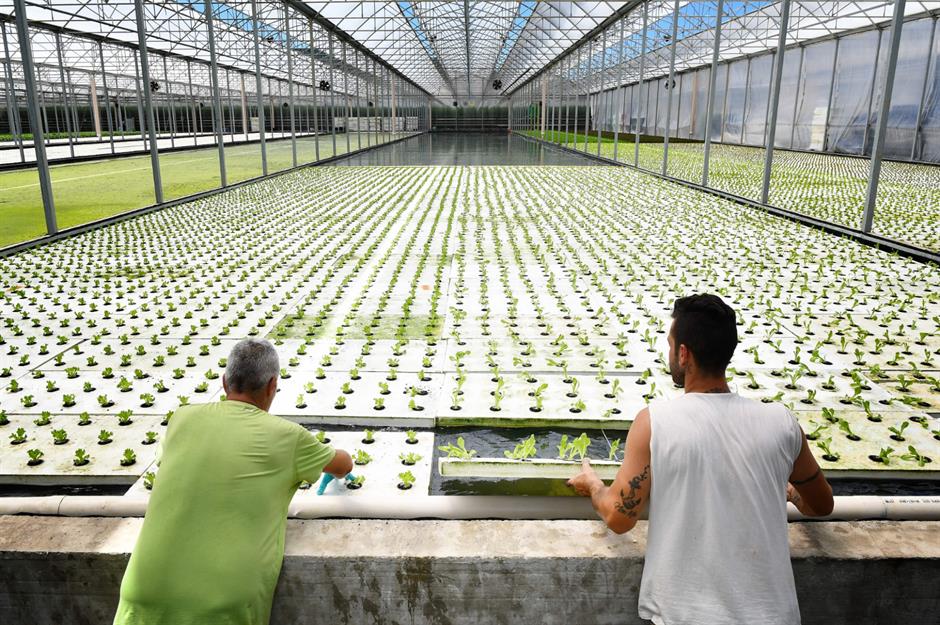
The world's population is set to grow by two billion by 2050, meaning that we will need 70% more food, according to the UN. But current agriculture techniques can impact the environment negatively, from the release of greenhouse gases to soil contamination and deforestation. And so, in order to feed the world in years to come, our farms will have to drastically change – increasing yields, reducing carbon footprint, and improving efficiency. Many innovative companies in the industry are already addressing these issues through a range of techniques, from using robotics to growing plants without soil, farming indoors and even taking farms underground. Click or scroll through to see farming as you’ve never seen it before.
VertiCrop, Devon, UK
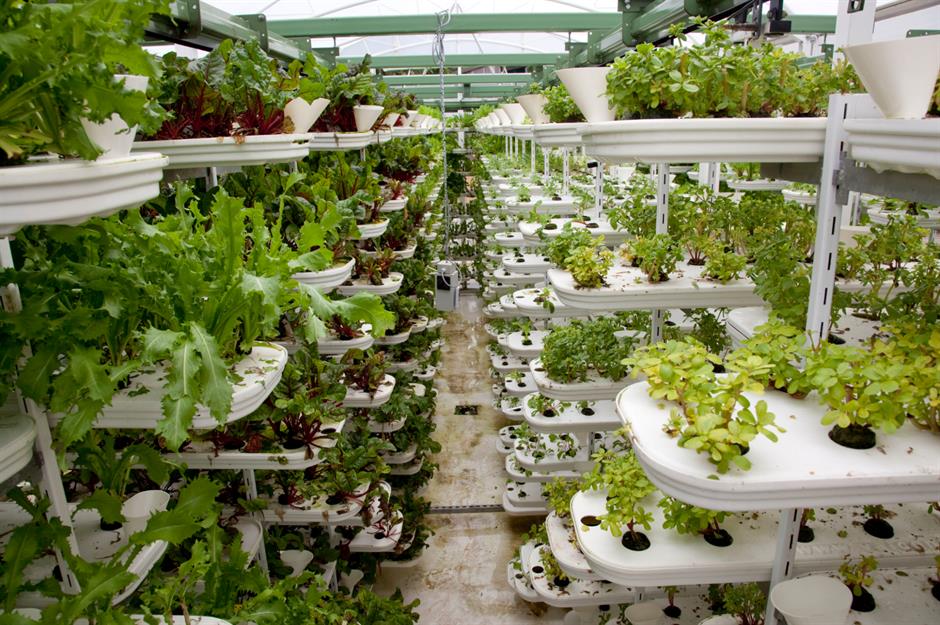
At Paignton Zoo in Devon, a small farming project named VertiCrop gained global recognition back in 2012 for pioneering vertical farming technology. A vertical farm sees crops stacked in layers, and typically grown without soil, which allows more produce to be grown in a much smaller space. At VertiCrop produce is grown in special trays suspended from a track overhead, which rotates the crops through the water and nutrients they need to grow. The water and nutrients that run off the crops are then collected in order to be recycled. Alterrus, the company that created the technology, also had a vertical farming project in Vancouver, Canada, although it was financially unsuccessful and had to close down.
AeroFarm, Newark, New Jersey
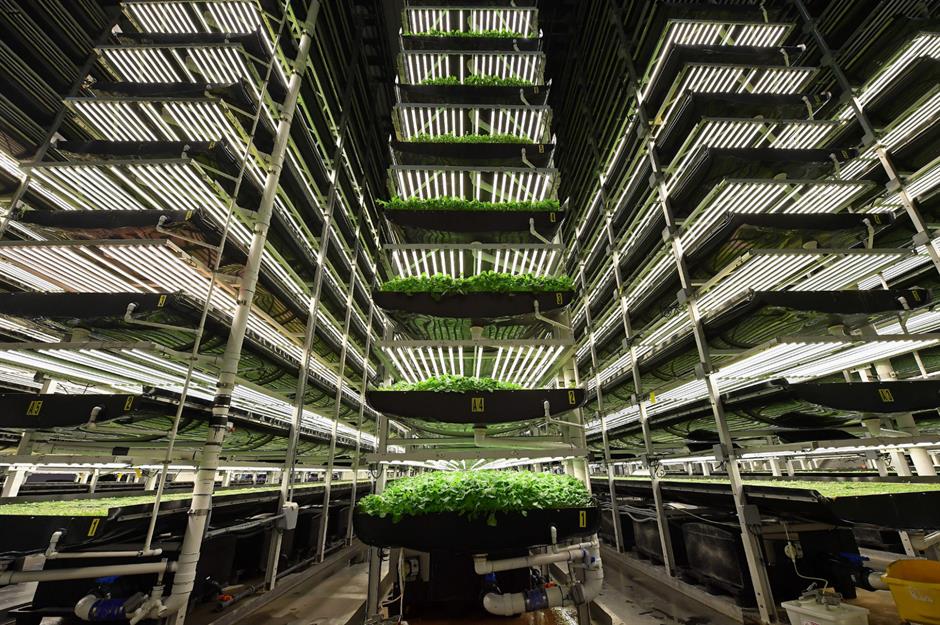
AeroFarm is a vertical farm in New Jersey that goes one step futher. It removes the sun. The farm uses LED lights instead of sunshine and fabric instead of soil, while water and nutrients are misted onto the plants’ roots. In fact, the farm grows its crops using 95% less water than field-farmed produce, and with yields 390 times higher per square foot annually. The farm mostly focuses on leafy greens and supplies them to the local area, reducing the food miles.
Colruyt Farm, Halle, Belgium
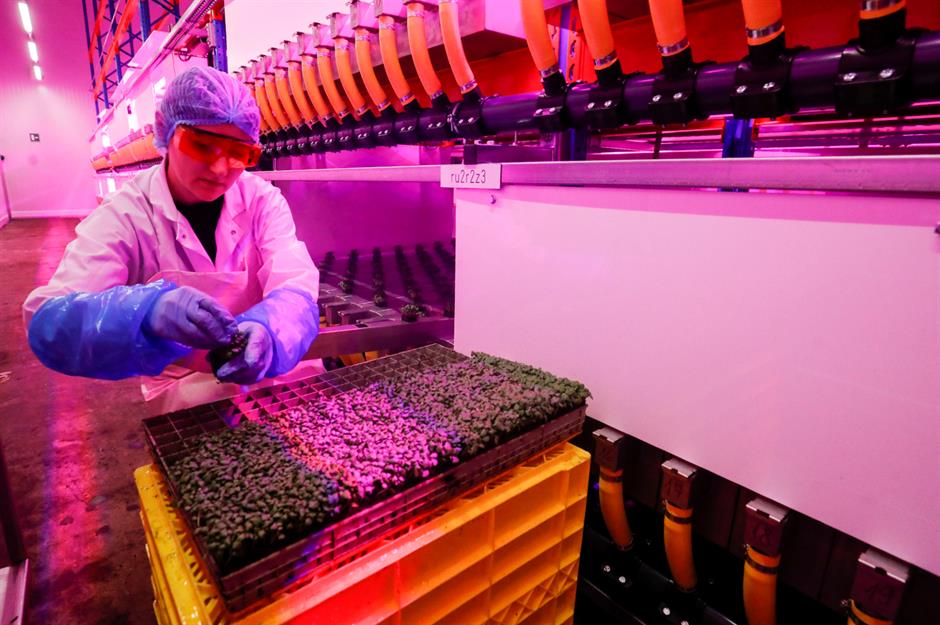
Growing Underground, London
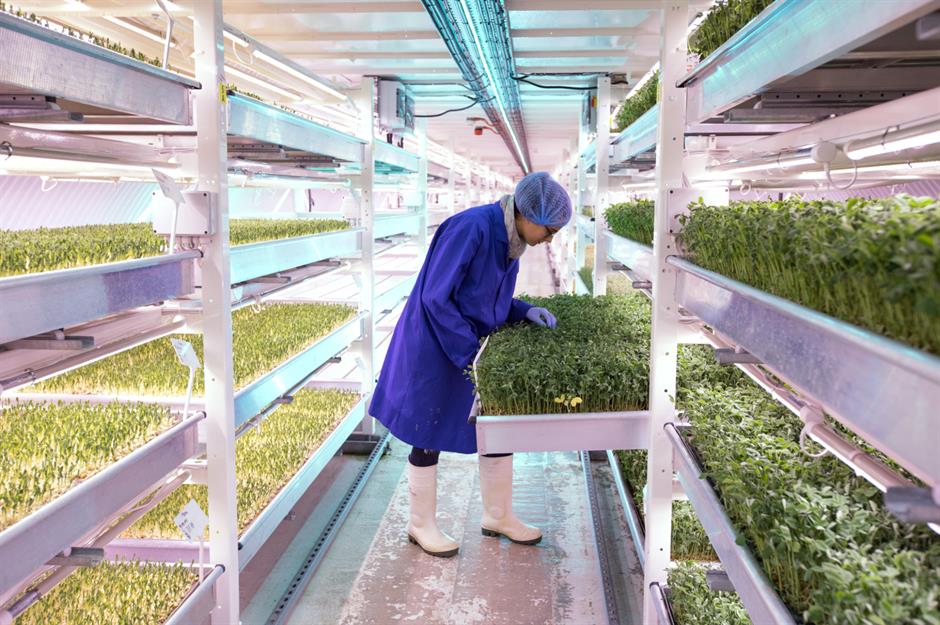
Not only does this farm grow all its crops indoors, it operates completely underground, paving the way for innovative use of space in urban areas. Based 108 feet (33m) below ground in Clapham, London, the farm uses hydroponic systems – cultivating plants without soil – and LED lighting to grow leafy greens, reducing water usage by 70%. Farming in this way means that crop yields are not affected by changes in the weather, while the inner-city location means many people can buy the produce nearby, reducing food miles.
Back of the Yards facility, The Plant, Chicago

Porte de Versailles rooftop farm, Paris
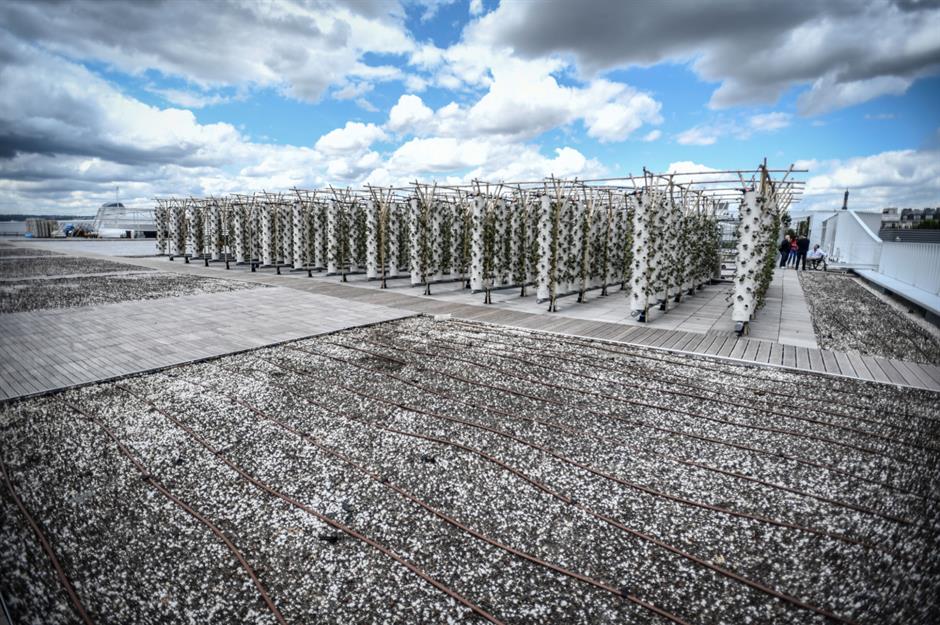
Sfera Agricola hydroponic farm, Gavorrano, Italy
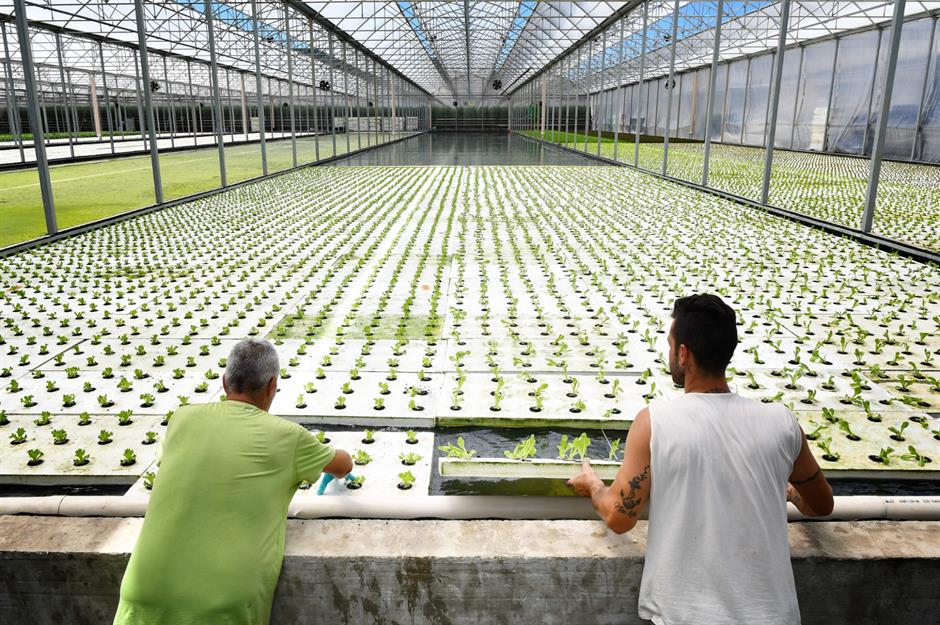
Westland, Netherlands
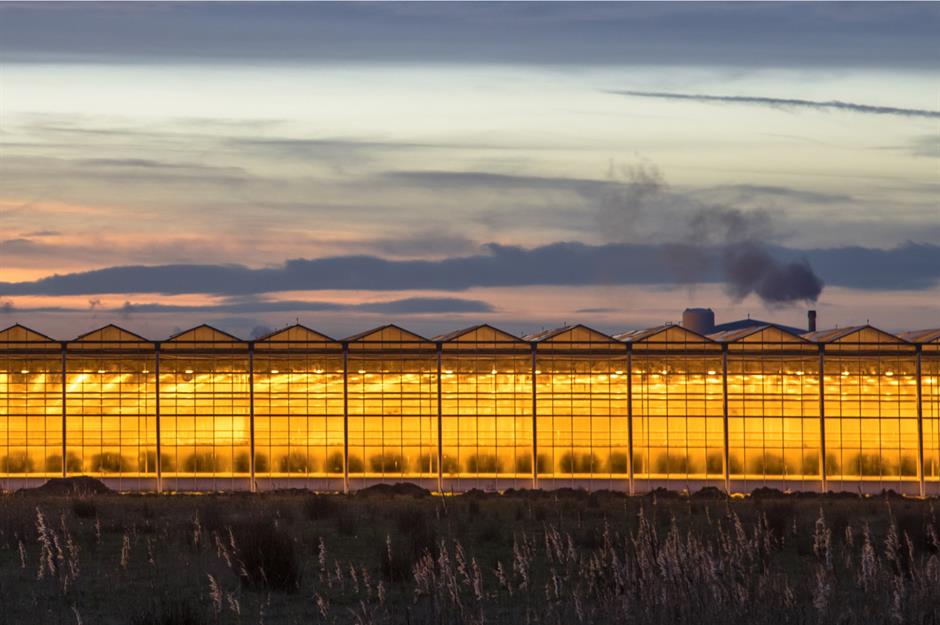
Floating Farm, Rotterdam, Netherlands
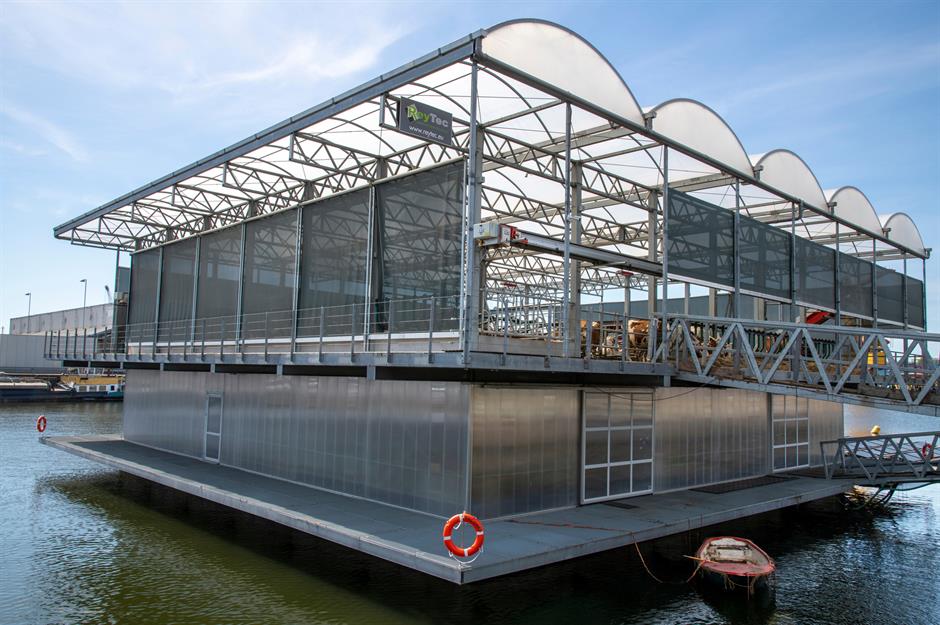
One farm in the Netherlands has taken things a step further – by taking to the seas. Floating Farm in Rotterdam is currently home to 32 dairy cows and provides milk to Lidl stores across the country. The project, conceived and commissioned by Peter and Minke van Wingerden of waterborne architecture specialist Beladon and designed by architecture studio Goldsmith, aims to show how farming can be carried out when rising sea levels threaten existing farmland, while reducing the use of resources and the environmental impact.
Now discover how cities are changing in the COVID-19 era
Fish Farm, Dubai
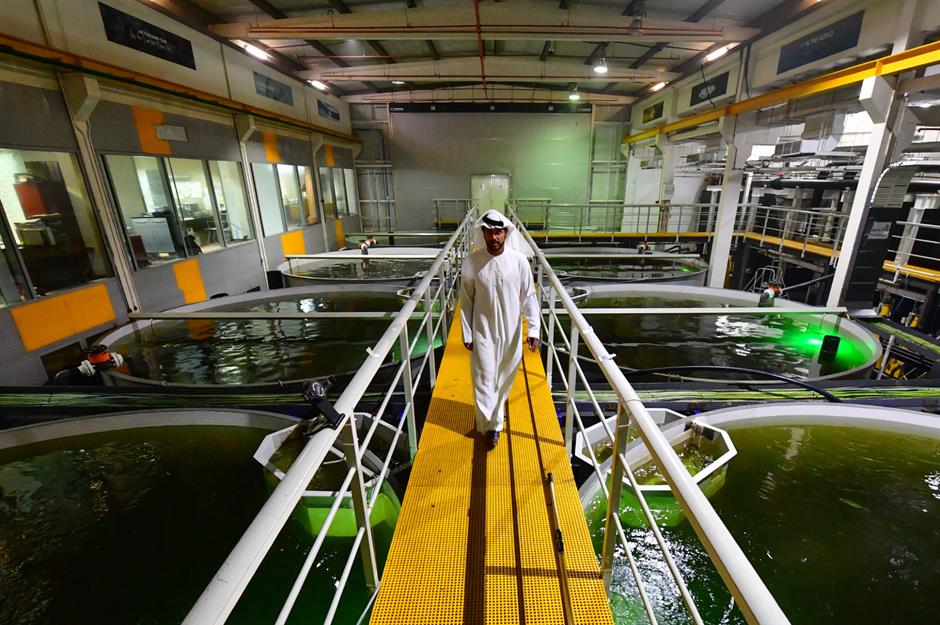
Aquarium of Paris Vegetable Garden, Paris, France

Aigrefoin Farm, Paris, France
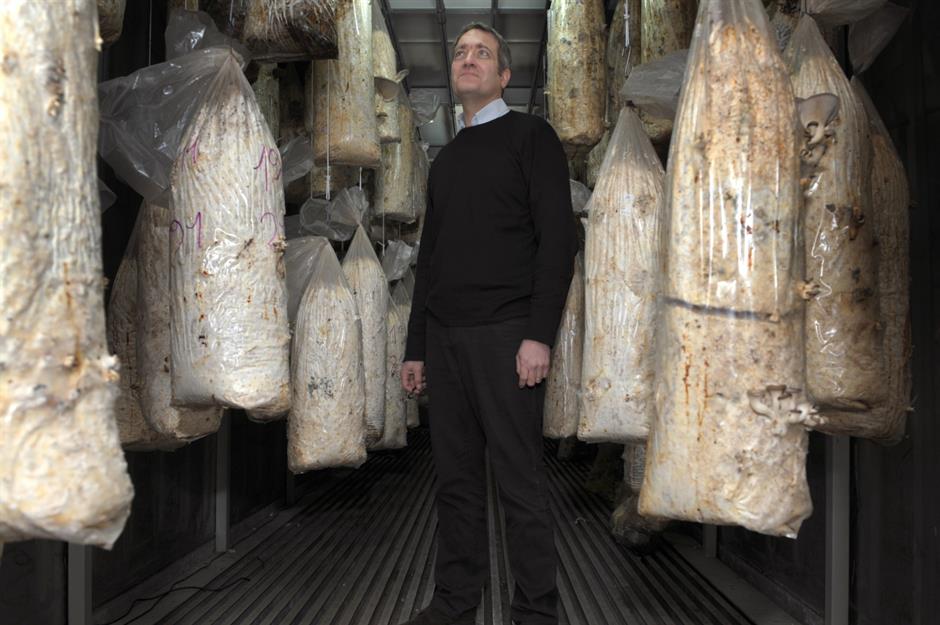
It might not look very appetising, but this mushroom farm is supplying its produce to some of the French capital’s top restaurants. It works like this: cafes donate their used coffee grounds to the farm, which are mixed with cardboard, wood chips and mushroom culture, before being sealed in plastic and left to incubate in the dark for two weeks. Next, the lights are switched on, humidity reduced, and the bags are cut to allow the mushrooms to grow through. After that, they’re ready to be harvested. In February 2019, around 20 tonnes of coffee grounds were being collected in Paris each month, which produced two tonnes of oyster mushrooms.
Sunqiao urban farming district, Shanghai, China
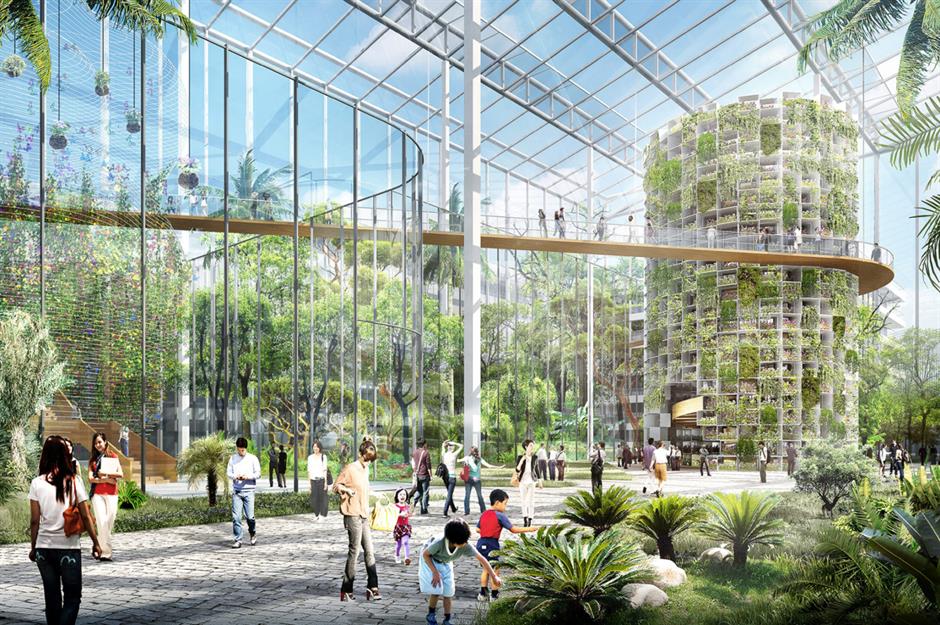
China is the largest agricultural producer and consumer in the world, yet with climate change presenting a threat to the future of food, some companies have begun to think up environmentally-friendly ways to farm. Urban agriculture project Sunqiao, based in Shanghai, is combining space-saving vertical farming systems with research and education, through an urban agricultural district spanning 100 hectares (1 square km).
Romainville Island Solar Farm, Romainville, Seychelles
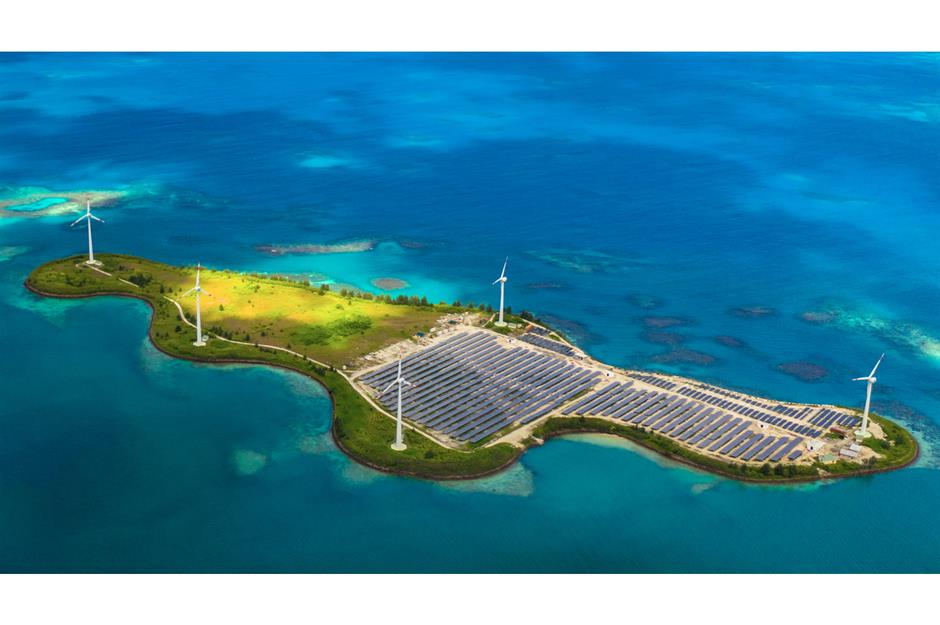
In the middle of the Seychelles, built on an artificial island called Romainville, is a solar farm with 14,850 solar panels capable of producing 5 MWp of electricity. The power plant, which went live in January this year, will supply free electricity to 400 low-income households. Elsewhere in the Seychelles, construction on another solar power plant on a lagoon in the Les Mamelles district on Mahe, the largest of the islands, has been delayed due to the COVID-19 pandemic. However, when it is finished it will be the world’s largest floating saltwater power plant.
Now read about the businesses fast-forwarding plans because of coronavirus
EcoRobotix weeding robots

Iron Ox robotic farm
.jpg)
At Iron Ox’s farm in San Carlos, California, robot picking arms, hydroponic vats and self-driving porters are used to grow its vegetables. The company has begun selling its produce in one branch of Bianchini’s Market, a grocery store just 0.6 miles from where it’s grown, reducing the transportation costs and food miles of the produce. Although the tech has many environmental benefits, experts suggest it’s too expensive to be scalable just yet – when it comes to farming, humans are still cheaper than robots.
Yamakura Dam Floating Solar Farm, Ichihara, Japan
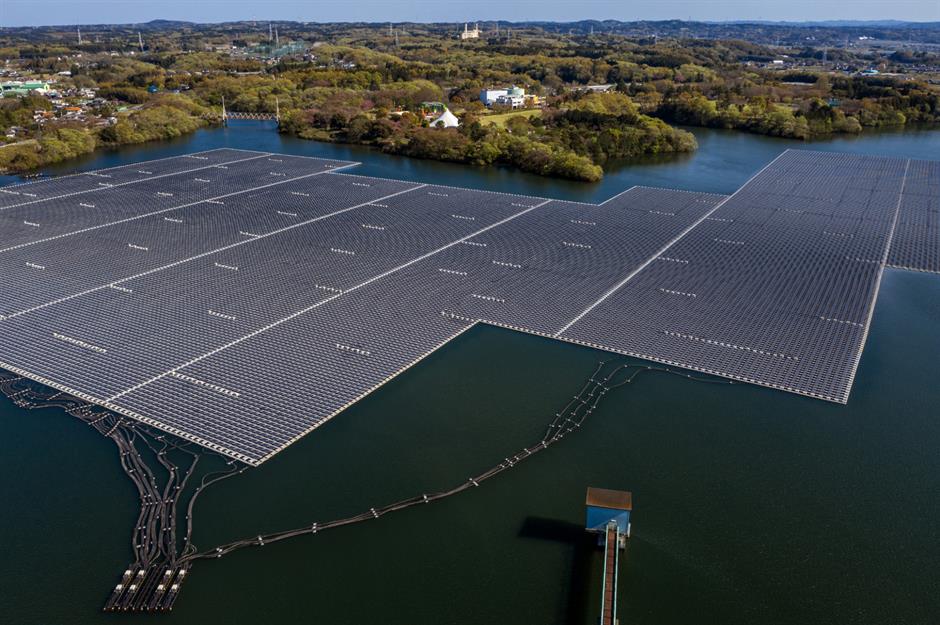
Another type of farm we’re likely to see many more of in the future is solar farms. On the Yakamura Dam in Ichihara, a floating solar power plant with the largest capacity for a plant of its type in Japan went live on 2 March. It’s more efficient than a regular solar power plant owing to the fact that it can operate at a lower temperature, and it’s estimated it will generate enough electricity to power 4,970 homes.
Villanueva Photovoltaic Power Plant, Viesca, Mexico
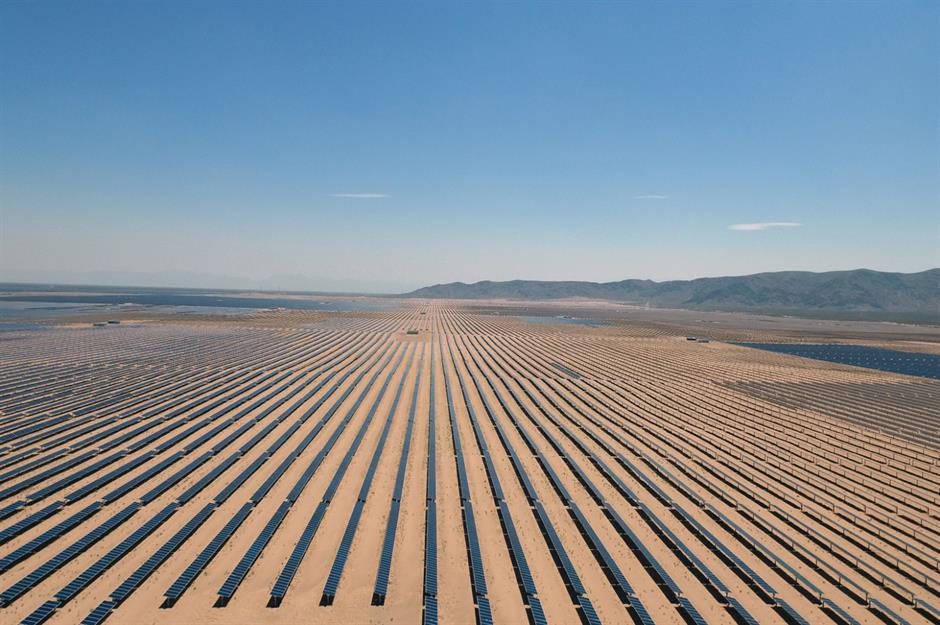
The largest solar power plant in the Americas, Villanueva power plant stretches across 9.3 square miles (24 square km) and provides 828 MW of PV capacity. The project was completed in two phases, the first phase finishing in 2013 and the second being completed in 2015, at a total cost of US$920.8 million (£730m). Seen from above, its sheer vastness is awe-inspiring.
Now read about the genius inventions that will transform your world
Comments
Be the first to comment
Do you want to comment on this article? You need to be signed in for this feature
Most Popular
Features How Michael Jackson's children boost their bank balances